if there's one thing in the world the food industry is dead set against, it's allowing you to actually maintain some level of control over what you eat. see, they have this whole warehouse full of whatever they bought last week when they were drunk that they need to get rid of -- and they will do so by feeding it all to you. and it doesn't matter how many pesky "lists of ingredients" and consumer protections stand between you and them.
#6. the secret ingredient: wood
you know what's awesome? newspaper. or, to be precise, the lack thereof. the internet and other electric media have all but eaten up classic print media, with the circulations of almost all papers on the wane. say, do you ever wonder what they do with all that surplus wood pulp?
"but cracked," you inquire, "what does this have to do with food ingredients?"

for the purposes of this article, you're kind of an idiot.
and we look at you squarely in the eye, then slowly bring our gaze upon the half-eaten bagel in your hand.
oh, shit ...
the horror:
what do they do with all the cellulose wood pulp? they hide it behind a bullshit name and make you eat it, that's what.

the best part of waking up, is wood pulp in your face!
and everybody's doing it. aunt jemima's pancake syrup? cellulose. pillsbury pastry puffs? cellulose. kraft bagel-fuls? fast-food cheese? sara lee's breakfast bowls? cellulose, cellulose, goddamn cellulose.
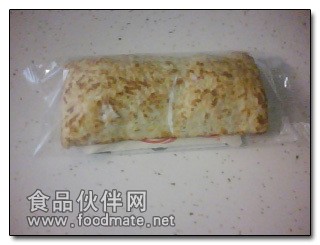
et tu, hot pockets?
it turns out that cellulose can provide texture to processed foods, so food companies have taken to happily using it as a replacement for such unnecessary and inconveniently expensive ingredients as flour and oil. as the 30 percent cheaper cellulose is edible and non-poisonous, the fda has no interest for restricting its use -- or, for that matter, the maximum amount of it that food companies can use in a product. it is pretty much everywhere, and even organic foods are no salvation -- after all, cellulose used to be wood and can therefore be called organic, at least to an extent.
but the worst thing about cellulose is not that it's everywhere. the worst thing is that it is not food at all. cellulose is, unlike the actual, normal food items you think you're paying for, completely indigestible by human beings, and it has no nutritional value to speak of. if a product contains enough of it, you can literally get more nutrients from licking the sweet, sweet fingerprints off its wrapper.

that loaf and the chopping block have an equal wood content.
#5. zombie orange juice
quick, name the most healthy drink your nearest store has to offer. you said orange juice, didn't you? it's what everybody makes you drink when you get sick. hell, that shit must be like medicine or something. and the labels are always about health benefits -- the cartons scream "100 percent natural!", "not from concentrate!" and "no added sugar!"
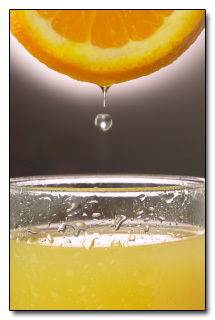
"less than four thumbs per gallon!"
and why not believe them? when it comes to making the stuff, orange juice isn't sausage. you take oranges, you squeeze oranges, you put the result in a carton, with or without pulp. end of story, beginning of deliciousness.
but what if we told you that "freshly squeezed" juice of yours can very well be a year old, and has been subjected to stuff that would make the re-animator puke?
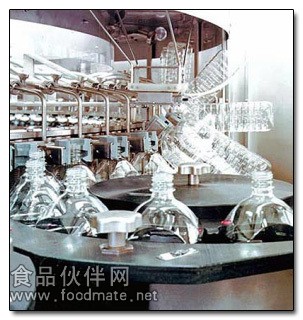
tropicana's bottling room. not pictured: anything orange.
the horror:
ever wonder why every carton of natural, healthy, 100 percent, not-from-concentrate orange juice manages to taste exactly the same, yet ever so slightly different depending on the brand, despite containing no additives or preservatives whatsoever?
the process indeed starts with the oranges being squeezed, but that's the first and last normal step in the process. the juice is then immediately sealed in giant holding tanks and all the oxygen is removed. that allows the liquid to keep without spoiling for up to a year. that's why they can distribute it year-round, even when oranges aren't in season.

thanks to science, we can enjoy screwdrivers from christmas to the 4th of july.
there is just one downside to the process (from the manufacturers' point of view, that is) -- it removes all the taste from the liquid. so, now they're stuck with vats of extremely vintage watery fruit muck that tastes of paper and little else. what's a poor giant beverage company to do? why, they re-flavor that shit with a carefully constructed mix of chemicals called a flavor pack, which are manufactured by the same fragrance companies that formulate ck one and other perfumes. then they bottle the orange scented paper water and sell it to you.
and, thanks to a loophole in regulations, they often don't even bother mentioning the flavor pack chemicals in the list of ingredients. hear that low moan from the kitchen? that's the minute maid you bought yesterday. it knows you know.
#4. ammonia-infused hamburger
any restaurant that serves hamburger goes out of its way to reassure you how pure and natural it is. restaurant chains like mcdonald's ("all our burgers are made from 100 percent beef, supplied by farms accredited by nationally recognized farm assurance schemes") and taco bell ("like all u.s. beef, our 100 percent premium beef is usda inspected, then passes our 20 quality checkpoints") happily vouch for the authenticity of their animal bits. their testaments to the healthiness and fullness of their meat read out like they were talking about freaking filet mignon.
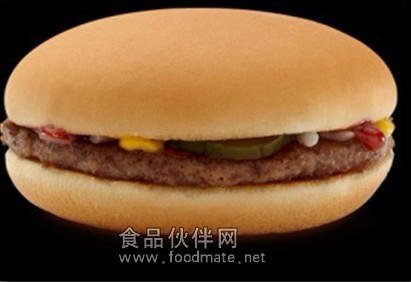
above: gourmet as balls.
and aside from the rare e.coli outbreak, the meat is clean. it's how they get it clean that's unsettling.
the horror:
ammonia. you know, the harsh chemical they use in fertilizers and oven cleaners? it kills e.coli really well. so, they invented a process where they pass the hamburger through a pipe where it is doused in ammonia gas. and you probably never heard about it, other than those times that batches of meat stink of ammonia so bad that the buyer returns it.
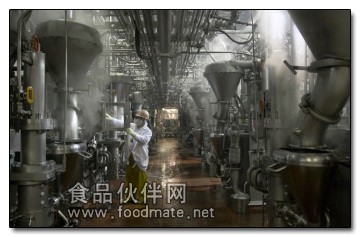
if your big mac ever tastes like pee, this is why.
the ammonia process is an invention of a single company called beef products inc., which originally developed it as a way to use the absolute cheapest parts of the animal, instead of that silly "prime cuts" stuff the competitors were offering (and the restaurant chains swear we're still getting). consequently, beef products inc. has pretty much cornered the burger patty market in the u.s. to the point that 70 percent of all burger patties out there are made by them. thanks, ammonia!
#3. fake berries
imagine a blueberry muffin.

one muffin, you greedy bastards.
even with your freshly gained knowledge that there may or may not be some cellulose in the cake mix, it's pretty impossible not to start salivating at the thought. this is largely because of the berries themselves. what's better -- they're so very, very healthy that it's almost wrong for them to taste so good.
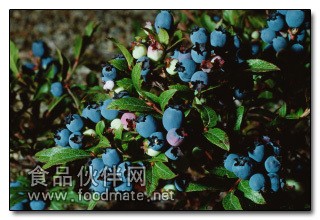
we could taste delicious if we wanted to. stupid show-off berries.
everything is better with blueberries -- that's why they put them in so many foods. now that we think of it, there sure seems to be a lot of blueberries in a lot of products. you'd think we'd see more blueberry fields around ...
the horror:
... not that it would do any good, as the number of blueberries you've eaten within the last year that have actually come from such a field is likely pretty close to zero.
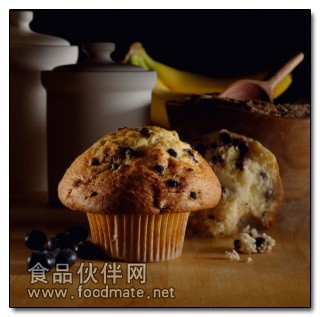
we can almost hear the muffins mocking us.
studies of products that supposedly contain blueberries indicate that many of them didn't originate in nature. all those dangly and chewy and juicy bits of berry are completely artificial, made with different combinations of corn syrup and a little chemist's set worth of food colorings and other chemicals with a whole bunch of numbers and letters in their names.
they do a damn good job of faking it, too -- you need a chemist's set of your own to be able to call bullshit. you can sort of tell them from the ingredient lists, too, if you know what to look for, although the manufacturers tend to camouflage them under bullshit terms like "blueberry flakes" or "blueberry crunchlets."
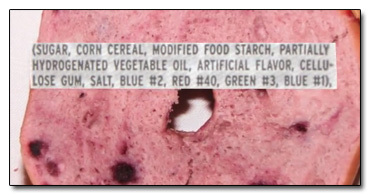
nothing says "nature" like petrochemical-derived food coloring.
there are a number of major differences between the real thing and the abomination blueberry: the fake blueberries have the advantages of a longer shelf life and, of course, being cheaper to produce. but they have absolutely none of the health benefits and nutrients of the real thing. this, of course, doesn't stop the manufacturers from riding the blueberry health train all the way to the bank, sticking pictures of fresh berries and other bullshit cues all over the product packaging.
now, here's some good news: the law does require the manufacturers to put the whole artificial thing out there for the customers. the bad news, however, is that they have gotten around this, too. first up, the kellogg's mini-wheats way:
this is somewhat recognizable. they just stick a picture of the berries there, while not actually bothering to conceal the fact that the actual cereal looks like it's made of cardboard and smurf paste.
a bunch of betty crocker products and target muffins use the second route, which brings the cheat level even further by actually containing an unspecified amount of real berries. this way they can legally advertise natural flavors while substituting the vast majority of berries with the artificial ones.
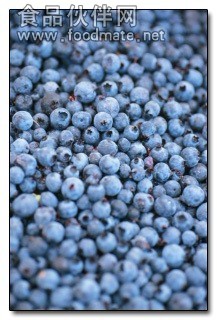
all but three of these are made of plastic.
or, you can just take the "we don't give a fuck anymore" route, as evidenced by general mills' total blueberry pomegranate cereal. the whole selling point of the product is that it contains a bucketload of blueberries and pomegranates, and the package boasts all the buzzwords the marketing department has been able to dream up:
in reality, not only are the blueberries fake, but also they've forged the freaking pomegranates as well.
#2. "free range" chickens that are crammed into a giant room

buying "free range" eggs is one of the easiest ways to feel good as a consumer -- they are at least as readily available as "normal," mass produced eggs from those horrible giant chicken prisons big egg maintains. hell, they even cost pretty much the same. there's literally no reason not to buy free range even though, now that we think about it, we're not actually sure what that means. but the animals must live in pretty good conditions. in fact, let's buy our meat and poultry free range, too!
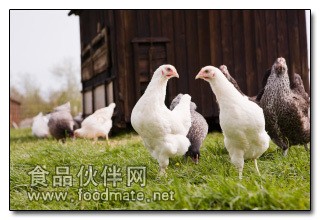
fresh air, green grass, plenty of cocks ... free range chickens have it good.
well, according to law, the definition of "free range" is that chickens raised for their meat "have access to the outside." ok ... so that's not quite as free as we assumed, and it appears to only apply to chickens raised for their meat. but at least they still have some freedom, what with the outside and all that.
the horror:
words have power, and "free range" in its original sense means unfenced and unrestrained. that makes it a powerful phrase that, no matter how smart we are, conjures subconscious images of freedom hens, riding tiny little freedom horses out on the plains, wearing hen-sized cowboy hats and leaving a happy little trail of delicious freedom eggs in their wake. there may be mandolin music.
although we have it on good authority that chickens prefer jay-z.
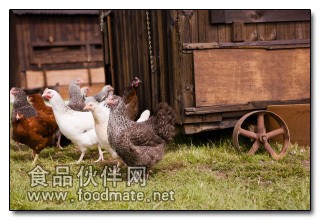
although we have it on good authority that chickens prefer jay-z.
but the reality is there are absolutely no regulations whatsoever for the use of the term "free range" on anything other than chickens raised for their meat. your snickers bar could be free range for all the government cares.
the industry knows this full well and happily makes us lap up the free range myth, even though in reality a free range hen lives in pretty much the same prison as a battery cage hen -- except its whole life takes place in the prison shower, rather than a cell.

look, they're free!
awareness of the free range myth is slowly increasing, but although a manufacturer that has been pushing his luck a bit too much does get jailed every once in a while, that doesn't do much to the overall phenomenon. in fact, europe is set to ban egg production in cage systems come 2012. guess what the replacement is going to be?
#1. bullshit health claims
nuts that reduce risk of heart disease. yogurts that improve digestion and keep you from getting sick. baby food that saves your kid from atopic dermatitis, whatever the hell that may be. products like that are everywhere these days, and we do have to admit it's hard to see any drawbacks to them. we eat yogurt anyway, so why not make it good for our tummy while we're at it?

"this brand treats syphilis and diabetes."
it's just that we can't keep wondering where all these magic groceries suddenly appeared from. one day your peanuts were peanuts, and then, all of a sudden, it was all coronary disease this and reduce heart attack risks that. maybe food science just had a really, really productive field day a while back?
or, of course, it could be that we're being fooled yet again.
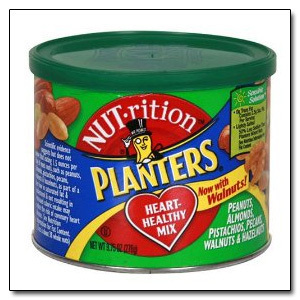
we don't know if we could handle mr. peanut lying to us.
the horror:
the vast majority of product health claims use somewhat older technology than most of us realize: the ancient art of bullshitting. the "health effects" of wonder yogurts and most other products with supposed medical-level health benefits can be debunked completely, thoroughly and easily. so why are they able to keep marketing this stuff?
it all started in 2002, when many ordinary foods found themselves suddenly gaining surprising, hitherto unseen superpowers. this is when the fda introduced us to a new category of pre-approved product claims. it was called "qualified health claims," and it was basically just another list of marketing bullshit the company can use if their product meets certain qualifications. this was nothing new. what was new, however, was that the list said no consensus for the scientific evidence for the product's health claims was needed.

"that pepper will keep you hard for hours, and eggplant works in lieu of chemotherapy."
since "no consensus needed" is law-talk for "pay a dude in a lab coat enough to say your product is magic and we'll take his word for it no matter what everyone else says," companies immediately went apeshit. suddenly, everyone had a respected scientist or six in their corner, and the papers they published enabled basically whatever they wanted to use in their marketing and packaging.
we're not saying that none of the products boasting health properties work. there are plenty out there, but they're kind of difficult to find under the constant stream of bullshit supplementary claims. come on, food industry -- just tell us the truth. don't you realize that we'll just eat it anyway? shit, people still buy cigarettes, don't they?
原文阅读:
参考译文(仅供参考):
如果在这世界上,食品产业会拼死反对什么的话,那就是允许你对你吃的东西实际保有某种程度的掌控。看,他们有这一整仓库上周喝醉时买来的玩意儿要处理掉——他们的解决之道就是把这些东西全都喂给你。在你和他们之间有多少讨厌的“配料表”和消费者保护条款挡驾并不重要。
#6.秘密配料:木头
你知道可怕的是什么吗?报纸。或者,准确点说,缺少报纸。互联网和其他电子媒体已经吃到了全部传统印刷媒体,这使几乎所有报纸的流通都在衰落。比如说,你就从来没奇怪过他们拿那些多余的木浆干嘛了吗?
“但这真疯狂,”你会问,“这东西和食品配料有什么关系?”
恐怖:
他们拿所有那些纤维素木浆都干什么了?他们把它藏在一个瞎编的名字后面,让你吃下去了,就这样。
觉醒的最佳素材,就是直接伸到你鼻子前的木浆。
人人都在这么做。杰米玛大婶的煎饼糖浆?纤维素。品食乐公司的奶酥?纤维素。卡夫百吉福?快餐奶酪?莎莉集团的早餐碗?纤维素。纤维素。上帝诅咒的纤维素。
原来,纤维素能为加工过的食品提供质感,所以食品公司已经愉快的采用它作为不必要和不方便的昂贵原料的替代品,如面粉和食用油。因为便宜30%的纤维素可食用而且无毒,(美国)食品药品监管局没兴趣限制它的使用——或者,就这一点而言,没限制食品公司可在一种产品中使用它的最大剂量。它确实到处都是。就连有机食品也不是拯救之道——因为纤维素曾经是木头,所以可以称为“有机的”,至少在一定程度上是这么回事。但是关于纤维素最糟糕的事还不在于它到处都有。最糟糕的是,它根本不是食品。
纤维素,与你以为你付钱购买的名副其实的、普通的食品不同,完全不能被人类消化,也没有任何值得一提的营养价值。如果一种产品中的它的含量太多,单只舔舔包装纸上甜甜的手印你都可以得到更多营养。
面包条和那块砧板含有相同的木头成分。
#5,僵尸橙汁
快,提几样离你家最近的商店里卖的最健康的饮料。你说橙汁,说了吗?这是你生病时人人让你喝的东西。该死,那东西一定像药或是什么的。而且标签总是提到健康益处——纸盒上嚷嚷着“百分百纯天然!”,“非浓缩物提取!”和“无糖添加!”
为什么不信这些话?说到制做这东西,橙汁可不是香肠。你拿到橙子,把汁挤出来,装进纸盒,或带或不带果肉。事情搞定,开始品尝美味。但是如果我们告诉你,你的“鲜榨”果汁可能有整整一年之“鲜”了,而且里面用的东西能让“活跳尸”喷出来,你会。。。?
恐怖:
为什么纸盒装的天然、健康、百分百、非浓缩物提取的橙汁做得味道全一样,根据牌子不同只有极小的差别,尽管不含有添加剂或防腐剂之类的东西,曾经疑惑过吗?
制作过程确实是从压榨橙汁开始的,但这也是整个过程中第一和最后正常的一步。之后果汁马上封装进巨型储罐,抽除所有氧气。这允许这些液体保存一年以上不变质。这就是为什么他们能够全年供应,即便在橙子已经不当季的时候。
这个过程只有一个缺点(从生产商的观点看,那是)——饮料里所有的味道全没了。所以,现在他们被一桶桶水汪汪的、味道跟纸差不多的葡萄困住了。可怜的大型饮料公司会做点什么呢?这有啥可奇怪,他们会用一种称作“味料”的经仔细勾兑的化学混合品给这玩意儿重新调味,那是由配制ck one和其他香水的同样几家香水公司生产的。之后他们再把这些调成橙子味的纸水装瓶买给你。而且,感谢管理法规中的一个漏洞,他们常常懒得在配料表中提到味料里的化学品。听到厨房传来低声呜咽了吗?那是你昨天买的美汁源。它知道你知道了。
#4.氨水浸润的汉堡
任何一家卖汉堡的餐馆都会不怕麻烦的向你保证这汉堡有多么纯净天然。像麦当劳(“我们所有的汉堡百分百以牛排制成,提供方农场经由国家承认的农场验证体系认证”)和塔可钟(“如同所有美国牛排一样,我们百分之百的优质牛肉受美国农业部检验,之后又经过我们20道质检点”)这样的连锁餐饮店,会开心的向你保证他们肉类食品的纯正。他们牛肉的健康营养验证读起来就像他们谈论的是奇异的菲列牛排。
除了偶尔大肠杆菌爆发,这些牛肉确实干净。但正是他们怎么让牛肉干净的才让人不放心。
恐怖:
氨水。你知道,就是那种他们在化肥和炉灶清洁剂里使用的强烈化学品。它消灭大肠杆菌真的是很有效果。所以,他们发明了一种流程,中间让汉堡包经过一条弥漫氨气的管道。你可能从来没听说过这个,除了有些时候,成批成批的牛肉散发出如此浓烈的氨水味,以至于顾客要求退货。
如果你的巨无霸汉堡啥时候有小便味,那就是因为这个。
这个氨气消毒流程是由一家名为“牛肉产品有限公司”的企业单独发明的,该公司起初发展这个流程是为了利用牛身上最便宜的部分,而不像竞争对手那样出售傻乎乎的上等牛肉(那些餐饮连锁发誓,我们吃的仍是这个)。结果,牛肉产品有限公司在相当大的程度上占领了美国的汉堡肉饼市场,达到全部汉堡馅的70%都是由他们制做的。感谢你,氨水!
#3.假蓝莓
即便你有刚刚获得的知识,知道在蛋糕粉里可能有也可能没有纤维素,一想到松饼还是很难让人不流口水。这主要是因为那些浆果。还有更妙的——它们都这么这么的健康,吃起来味道这么好几乎是不可能的。
什么都东西加了蓝莓都会更好吃——这也是为什么他们在这么多食品里都放蓝莓。于是我们想,确实看见好多产品里有好多蓝莓。你会认为我们应该在周围看到更多的蓝莓田
恐怖:
即便有更多蓝莓田也没用,因为你去年全年吃的蓝莓实际都来自一块田地,而这块田地可能就要化作乌有了。
研究被认为含有蓝莓的产品的显示,许多蓝莓都不是自然的产物。所有那些颗颗镶嵌、有弹性又多汁的果粒,彻底是人造的,它们包括不同的组合,玉米糖浆,一点化学师调配的食品色素,还有名字里有一大堆数字和字母的其他化学品。
这些东西仿造得也该死像极了——你需要自己了解化学师的术语才能管这叫牛粪。如果你知道该找什么的话,也勉强能从配料表上看出它们,尽管生产商喜欢用一些胡编的名头给它们加上伪装,比如“蓝莓薄片”,“蓝莓屑”。
在真蓝莓和可恶的假蓝莓之间,有好几项重要区别:假蓝莓有保存期限更长的优势,当然,生产也更便宜。但他们完全没有真东西的健康利益和营养物质。当然,这没有阻止生产商把“蓝莓健康列车”一路开到站,用鲜莓图片和其他瞎编的提示贴满了产品包装。
现在,这里有一些好消息:法律要求生产商把整个这个人造品为消费者标明出来。然而,坏消息是,他们也已经找到了逃避的捷径。第一个想出主意的,凯洛格的迷你麦:
这多少是可以辨认出来的。他们只是贴了一张蓝莓的图片在那儿,同时根本没有揭示这一事实,这种谷物食品看着就像是用硬纸板和蓝色面糊做的。
一大堆“贝蒂妙厨”的产品和target松饼采用的是第二种路线,通过实际含有一定不定量的真蓝莓把欺骗水平向纵深做了推进。用这招,他们就能合法的在广告里宣传自然口味,同时把绝大多数莓子用人造品替代掉。
或者,你可以采取“老子tm什么也不给”的路线,就像通用磨坊公司的“蓝莓石榴谷物早餐”身体力行的那样。这一产品的全部卖点就是它含有整吊斗的蓝莓和石榴粒,包装上吹嘘的全是市场部能梦得出来的时髦词儿:
#2,挤着住的散养鸡
买散养鸡蛋是作为消费者感觉良好的最简单方式之一——它们至少像“普通鸡蛋”那样随时能买到,和那种由big egg经营的可怕的大型鸡监狱批量生产的鸡蛋一样。该死的是,它们甚至要价也几乎一样。即便我们现在想想其实不确定那是个什么东西,但还是没理由不买散养蛋。至少鸡一定生活在相当好的条件下。干脆,让我们买肉买鸡也要散养的吧!
额,根据法律,“散养”的定义是,肉用鸡“可以在外面活动”。ok。。。所以并不像我们想的那么自由,而且看起来只适用在肉用鸡身上。但至少,“外面”等等的让他们还有一些自由。
恐怖:
词语是有力量的,“散养”的原意是无篱笆、无限制。这使它成为一个有力的词,不管我们有多聪明,都会在潜意识里构想出自由母鸡的形象,它骑着小小的自由之马在草原上奔驰,戴着母鸡型号的牛仔帽,快乐的在身后留下一小行美味的自由鸡蛋。也许还配有曼陀林音乐。
但事实上,对肉用鸡之外使用“散放”这个词,绝对没有任何相关规定。你的士力架也可以是“散养”的,政府管不着。这一行的人完全了解这个,于是愉快的让我们欣然接受散养的神话,即便事实上散养母鸡生活在差不多像格子笼母鸡一样的监狱里——除了它的一生是在监狱澡堂里度过的,而不是小牢房。
人们对自由散养神话的觉醒在慢慢增加,但是尽管曾有一个生产商因为运气用得有点过而被关过几天,这对整个现象都没什么影响。事实上,欧洲将在2012年开始禁止网箱式的鸡蛋生产。但,。。猜猜替代方式会是什么?
#1 骗人的健康宣示
坚果减少得心脏病的危险。酸奶改善消化,预防疾病。婴儿食品能拯救你孩子的过敏性皮炎,甭管它可能是什么东西。这样的产品现在到处都是,而且我们必须承认很难看出它们有什么不对。我们反正要吃酸奶,为啥不顺便让它有利于我们的胃呢?
只是我们忍不住想问,这些魔力食品是从哪里突然出现的。昨天你的花生还是花生,突然,它又能治疗冠状动脉疾病,又能降低心脏病发的危险。也许食品科学昨个儿刚发现了一块贼宝贼宝的宝地?
恐怖:
绝大多数产品健康宣示采用的技术比我们多数人知道的都要老:瞎编滥造的古老艺术。其实,奇妙酸奶的“健康效果”和大部分其他产品声称达到药物水平的健康利益,都可以被完全、彻底和轻易的揭露出来。那么,为啥他们还能持续推销这号东西?
这一切是从2002年开始的,当时许多普通食品突然发现自己获得了令人惊讶的、迄今为止没人见过的超级功效。这时(美国)食品药品监管局为我们引入了一个新类别的审批前产品声明。它叫作“资格健康声明”,只要一家公司的产品达到某种资格要求,这份声明基本上就成为它可以使用的另一份营销吹嘘宣传单罢了。这并不新鲜。但新鲜的是,这张单子上对产品健康宣示所需的科学证据共识却只字不提。
自从“不需要共识”成为“付钱买通试验人员提你的产品说好话,我们会听了就当真不管别人再说啥”的法律术语之后,各公司便马上发了疯。
“不需要共识”作为法律术语,代表的是你可以付钱买通一个穿试验白大褂的家伙,让他说你的产品具有神奇功效,然后大家会把这话当真,别人再说什么都没用了。从那以后,各家公司便发了疯。突然,人人都有一位可敬的科学家,或者角落里还有六个。而他们发表的说明书基本上让他们可以在宣传中或是包装上想怎么说就怎么说。我们不是说这些产品吹嘘的健康性质没有半点作用。有很多效果,但是很难说不停大吹大擂的补充说明跟它们有什么对应。行了,食品产业——就告诉我们真心话吧。你不就是发现我们吃什么都行吗?狗屎,人们还买烟卷呢,不是吗。

